Our Women Crushing IT blog series aims to showcase the achievements of amazing women who are making waves in the tech industry. From software developers to cybersecurity experts, product managers to data analysts, we shine a spotlight on talented women who are breaking down barriers and shattering stereotypes. We believe that representation matters, and that by sharing the stories and insights of these incredible women, we can inspire the next generation of female tech leaders. Today, Davinia Simon, Head of Sales & Growth Markets at Stax shares her insights and journey of becoming a female leader in the tech space.
Can you share a little bit about what it is that you do and what a typical day for you is like?
Davinia is a leader at native AWS Cloud Management platform vendor, Stax.
What do I do? My responsibilities revolve around developing and executing strategies to bring the Stax platform to market effectively, both locally and globally.
A typical week involves leading a team of marketing, sales and customer; providing direction, mentoring, and coaching to ensure we meet our business objectives. I’ll spend time with our team developing and executing campaigns, sales initiatives, and launches – and spend time meeting with customers, partners, external agencies, and vendors. And when there are quieter moments in a week, I’ll deep dive into strategic planning for the future, reviewing current market trends, customer insights, and the competitive landscape.
What are the benefits of having women in leadership roles?
It’s often discussed how women bring different perspectives and approaches to business, and we’re all aware there are benefits in driving a more inclusive workplace. From improved innovation to better employee engagement, improved profitability and overall, better performance for the company.
From my own experience, I’ve found it critical to have female representation in leadership roles because it ensures that women’s perspectives and experiences are represented in decision-making processes. These decision-making processes affect both employees and internal stakeholders, but they also affect our customers, partners and other strategic external relationships. Non-inclusive and gender-biased teams struggle to understand and meet the needs of a diverse customer base, leading to decreased customer satisfaction and loyalty. In my role as Head of Growth, I find this one of the most compelling reasons to ensure a diverse, equitable and inclusive leadership group.
In your experience, does being a woman in your profession come with extra challenges that you have had to overcome? If so, what are they and how did you overcome them?
In an industry that is male-dominated, there are often established social activities, formal and informal, that too often leave professional women out. The impact here for me often meant I had limited access to building networks in which my male peers were often participating. From golf days to happy hours, to poker nights – it was easy to feel like an outsider, and difficult to establish myself as an equal with male colleagues and leaders. To overcome those feelings, I tapped into different networks and developed my own where they didn’t exist. I got proactive at organising gatherings, attending events, leaning into communities and taking up space in the room.
Over time, I started my own family and new challenges emerged; juggling the demands of a professional career with my role as mum to two children. But with this, a whole new set of skills were developed as I focused on careful planning, prioritisation, and finding a balance that worked for my own priorities. Whether caregiving for young children, elderly parents, friends, pets or family members, many of us are in a similar boat and juggling those demands alongside our careers. Setting boundaries has been helpful for my time management, but a turning point came during COVID when I stopped hiding those external responsibilities and started sharing more with colleagues and leaders around me.
Why do you think it is important for more women to join the tech industry?
If nearly half of consumers are women, it should be common sense to have around half of the product manufacturing, engineering, and marketing done by women. The lack of women in technology jobs means that female consumers are also being underrepresented. If women use technology frequently, why is the majority of technology being designed exclusively by men?
Do you think enough is done to help women get into the tech industry? If not, what would you recommend?
It’s a slow process and let’s not forget that we’re undoing years of gender stereotyping and biases. And while there have been many efforts to encourage more women to enter the tech industry, I firmly believe we have a long way to go in terms of achieving gender parity in the sector.
Personally, I feel like more needs to be done to ensure that women have equal access to opportunities and are supported in their tech careers. This includes addressing biases and improving workplace culture. Ensuring that there are female-focused workplace benefits on offer and a gender-neutral recruitment process. It means in some cases, playing the long game and hiring outside of the usual talent pools. Achieving gender parity in an organisation is hard. So we need to work harder at it. It’s that simple.
What advice would you give yourself just starting out?
Stay courageous, stay positive, and don’t be afraid to take up more space in the room. And remember, others are always watching, so lead by example.
Thank you to all the amazing women who shared their experiences and insights on being a female leader in the tech industry. Your contributions have been invaluable, and we hope that your stories will inspire other women to pursue a career in the tech space and achieve success in this field. Are you a female leader wanting to share your insights? Please reach out here to share your story.
Join our Promoting Women in IT group and connect with like-minded individuals who are passionate about advancing their careers in the tech field. Together, we can break down barriers and pave the way for more women to succeed in the tech industry.

Head of Sales & Growth Markets at Stax






